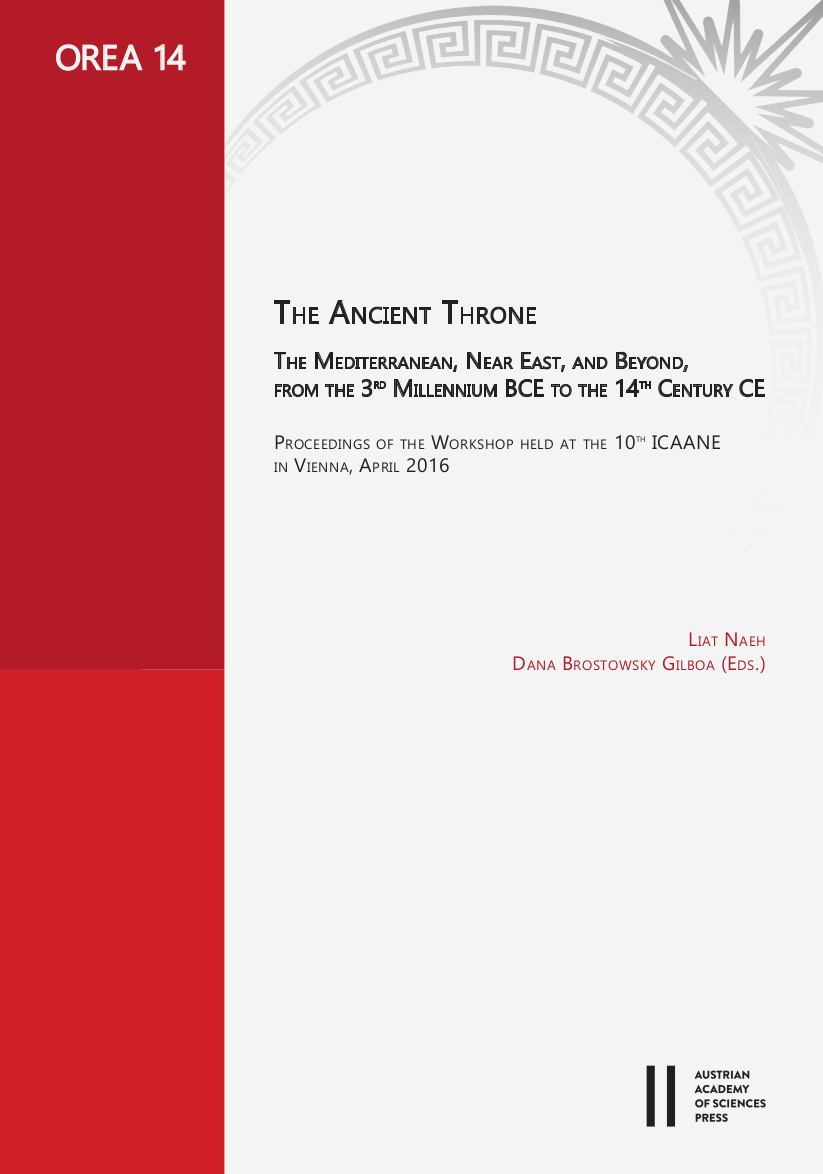
The Ancient Throne. The Mediterranean, Near East, and Beyond, from the 3rd Millennium BCE to the 14th Century CE.Proceedings of the Workshop held at 10th ICAANE in Vienna, April 2016, pp. 85-104, 2020/09/02
Proceedings of the Workshop held at the 10th ICAANE in Vienna, April 2016
The excellent preservation of the ivory-covered chair Γ from the 8th-century BCE Tomb 79 in Salamis calls for a deeper analysis of the object than scholarship has offered since its discovery in the 1960s. The decision to include this object (and the other burial goods) in this tomb – whether by the deceased himself or by those who buried him – projected a specific identity upon him. Various physical and aesthetic qualities of chair Γ would each have added a particular facet to this overall identity. In this paper, I will analyse five of these qualities, which I term ‘agentive mechanisms.’ These include the chair’s nature as a luxury object, its nature as a foreign object, its nature as an ivory object, its luminosity, and its iconography. These mechanisms would have been activated during a public funerary ritual, when the audience (likely the community at Salamis) would have viewed the chair in association with the deceased. As a foreign, luxury object, chair Γ gave the deceased social, political, and diplomatic legitimacy. Its ivory material drew its possessor into an elite circle of consumers of ivory objects – perhaps, specifically, of ivory chairs/thrones. The luminous nature of the ivory and its gold decoration may have associated the chair – and thus the deceased – with the sacred or divine, while the iconography of the ivory goods as a whole may have projected an identity of kingship. By way of these mechanisms, chair Γ was meant to agentively mark, and thus legitimize, the deceased as a socially significant, politically able, diplomatically savvy, divinely touched, king-like figure. The memory of this figure and the goods buried with him would have left a lasting impact on the community and perhaps helped create a legend of a powerful ancestor of a royal dynasty.
Keywords: Salamis, chair, throne, identity, ivory, luminosity, luxury, ritual